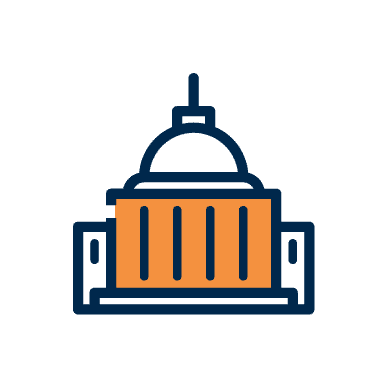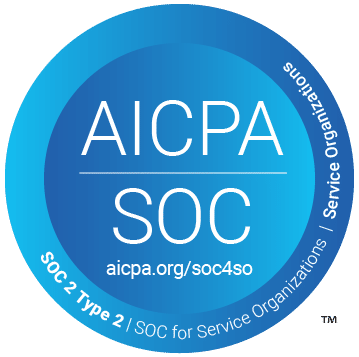The U.S. Department of Health and Human Services established The Office of Inspector General (OIG) to carry out these basic functions:
- The identification and elimination of fraud, waste, and abuse of the programs initiated by the U.S. Department of Health and Human Services.
- The promotion of efficient and economical operational procedures in the Department.
- The exclusion of individuals and entities found out to have engaged in fraudulent or abusive usage of Federal healthcare programs such as Medicaid and Medicare.
- The imposition of Civil Money Penalties (CMPs) to individuals and entities that have unfairly used or abused Federal healthcare programs.
In order to further understand the scope of authority bestowed upon OIG by the U.S. Department of Health and Human Services, we must, first and foremost, get acquainted with the concept of Exclusion.
EXCLUSION
The OIG identifies and legally pursues cases of exclusion based on two methods:
Permissive Exclusions
The OIG has the authority to choose to exclude individuals and entities that have committed the following/and other related misdemeanors:
- Misdemeanor conviction relating to healthcare fraud.
- Conviction relating to fraud in non-healthcare programs.
- Conviction relating to obstruction of an investigation.
- Misdemeanor conviction relating to controlled substance.
- Claims for excessive charges, unnecessary services or services which fail to meet professionally recognized standards of healthcare, or failure of an HMO to furnish medically necessary services.
- Fraud, kickbacks, and other prohibited activities.
- Failure to disclose required information, supply requested information on subcontractors and suppliers, or supply payment information.
- Failure to grant immediate access.
- Failure to take corrective action.
- Controlling of a sanctioned entity.
- Making false statement or misrepresentations of material fact.
- Failure to meet statutory obligations of practitioners and providers to provide medically necessary services meeting professionally recognized standards of healthcare (Peer Review Organization (PRO) findings).
Mandatory Exclusions
The OIG is mandated by law to exclude individuals and entities on the grounds specified in the Social Security Act, which includes:
- Conviction of program-related crimes.
- Conviction relating to patient abuse or neglect.
- Felony conviction relating to healthcare fraud.
- Felony conviction relating to controlled substance
- Conviction of two (2) mandatory exclusion offenses.
- Conviction on three (3) or more occasions of mandatory exclusion offenses.
In essence, mandatory exclusions answer to specific laws that had been outlined prior to OIG’s establishment, whereas, permissive exclusions are those which the OIG can enact at their own discretion.
ADMONITION
The basic effect of an OIG exclusion is that no payment may be made towards excluded individuals or entities for any items provided, directed, or prescribed, or any services rendered. This exclusion from payments extends to all kinds of requested Federal program reimbursements.
Here are examples of health care arrangements involving excluded individuals or entities that are banned from receiving reimbursements from a Federal health care program, and, consequently hold providers, which include employers and contractors, liable to a Civil Monetary Penalty (CMP).
- Services performed by excluded nurses, technicians or other excluded individuals who work for a hospital, nursing home, home health agency or physician practice.
- Services performed by excluded pharmacists or other excluded individuals who input prescription information for pharmacy billing.
- Services performed by excluded ambulance drivers, dispatchers and other employees involved in providing transportation to hospital patients or nursing home residents.
- Services performed for program beneficiaries by excluded individuals who sell, deliver or refill orders for medical devices or equipment.
- Services performed by excluded social workers who are employed by health care entities to provide services to Federal program beneficiaries.
- Administrative services, including the processing of claims for payment, performed for a Medicare intermediary or carrier, or a Medicaid fiscal agent, by an excluded individual.
- Services performed by an excluded administrator, billing agent, accountant, claims processor or utilization reviewer.
- Items or equipment sold by an excluded manufacturer or supplier, used in the care or treatment of Federal health care program beneficiaries.
It is important to note that whether or not an excluded individual provide direct patient care to Federal health care beneficiaries, so long as the eventual billing of items or services rendered will be under, directly or indirectly, Federal expenses, constitutes to the violation of rules pertaining to OIG exclusion.
In effect, an excluded individual or entity that did not refrain from providing an item or service during exclusion can face:
1.) A CMP of $10,000 for each item or service furnished.
2.) A CMP penalty thrice the amount claimed for each item or service.
3.) Jeopardize the possibility of reinstatement into Federal healthcare programs.
Meanwhile, employers who hire excluded individuals or entities may be held liable to CMP, unless it is proven that they have the capacity to pay (and are actively doing so) excluded individuals or entities with private funds (not through federal funding sources), and when no services are furnished to federal program beneficiaries by said excluded individuals/entities.
Survey
Proactivity is the best way to avoid CMP liability. OIG has advised healthcare providers to:
- Extensively review contracts or job categories in order to determine whether specific items provided or services rendered by current employees or contractors directly or indirectly fall under a Federal health care program reimbursement scheme.
- Before hiring or making business agreements with contractors, providers must screen their OIG status by using the List of Excluded Individuals/Entities (LEIE) available on the OIG website (http://oig.hhs.gov/exclusions).
Information Included on LEIE
(1) The name of the excluded person at the time of the exclusion
(2) The person’s provider type
(3) The authority under which the person was excluded
(4) The State where the excluded individual resided at the time of exclusion or the State where the entity was doing business
(5) A mechanism to verify search results via Social Security Number (SSN) or Employer Identification Number (EIN).
Caveat
Although not mandated by law for providers to check the LEIE, the OIG highly recommends and most times requires to follow these best practices:
- Checking the LEIE prior to employment or engaging in contracts.
- Periodically checking the LEIE to determine the exclusion status of current employees and contractors.
The LEIE is updated monthly; therefore monthly screening is the best practice in terms of avoiding potential CMP liability.
Providers can also use other supplementary exclusion databases such as:
General Services Administration’s (GSA) System for Award Management (SAM)
–this includes OIG’s exclusions as well as debarment actions taken by Federal agencies.
The National Practitioner Data Bank and the Healthcare Integrity and Protection Databank
–this includes information on collected medical malpractice payments paid on behalf of physicians, adverse actions taken by licensing agencies against health care practitioners and health care entities, adverse privileging actions, and any negative actions or findings taken against health care practitioners or entities by Quality Improvement Organizations and Private Accreditation Organizations
YIELD
In order to ensure a quick and reliable Self-Disclosure Process, the Office of the Inspector General (OIG) has enacted the following:
- Provider Self-Disclosure for providers who wish to disclose suspected fraud.
http://www.oig.hhs.gov/compliance/self-disclosure-info/protocol.asp
- HHS Contractors and Self-Disclosures for individuals, businesses, or other legal entities that are awarded Government contracts, or subcontracts, to provide services to the Department of Health and Human Services (HHS) to disclose suspected fraud.
http://www.oig.hhs.gov/compliance/self-disclosure-info/contractor.asp
- HHS Grantee Self-Disclosure for grantees or subrecipients to disclose suspected fraud. Correspondence may be made to this address:
DHHS/OIG/OI
Grantee Self-Disclosures
330 Independence Avenue, Room 5409
Washington, DC 20201
For more info about the LEIE visit our OIG exclusion List page which contains authoritative Exclusion OIG HHS GOV resources.
http://www.dinsmore.com/oig_exclusion_list/
http://www.wiggin.com/oig-releases-guidance-on-compliance-with-exclusion-list-screening
http://oig.hhs.gov/exclusions/files/sab-05092013.pdf
http://oig.hhs.gov/exclusions/effects_of_exclusion.asp
http://www.oig.hhs.gov/compliance/self-disclosure-info/index.asp
Please refer to this resource for more helpful information on OIG Exclusions and LEIE searches.




































